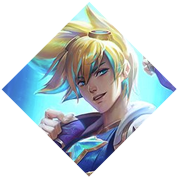
One of the most engaging reasons to play League is outplay potential. Outmaneuvering and outthinking your opponent. Often this comes down to knowing how to tactically react against your opponent, and evolving this knowledge into how to strategize and respond to the enemy team's actions. Perhaps one of the most beguiling aspects of outplay, and strategy in general, is predicting your opponent's movements and responding to them. In gaming, this skill is often called 'Yomi'.
The term “Yomi” is a Japanese one that stems from the phrase “knowing the mind of the opponent”. It is something that closely related to fighting games and other orthogames where a competitive one-versus-one zero-sum nature of game play is apparent. This means that Yomi also extends to any sort of game between conflicting parties.
Yomi as a concept is deeply rooted in tactics and strategy as it includes the ability to accurately read and predict the motivations, moves, and a actions of opponents and how to respond accordingly. In short, Yomi is about “knowing what your opponent is going to do.”
Although the central concept to Yomi is prediction, that part of the definition is way more useful in micro-play than macro. However, at its deepest level, Yomi is about thinking about the most likely responses the opponent may have about your current action, and preparing for said responses.
"What enables the wise sovereign and the good general to strike and conquer, and achieve things beyond the reach of ordinary men, is foreknowledge. This foreknowledge cannot be elicited from spirits; it cannot be obtained inductively from experience, nor by any deductive calculation . . . the dispositions of the enemy are ascertainable through spies and spies alone." -Sun Tzu, the Art of War
Applying Yomi to an actual League game takes a lot of mindfulness and patience, though. Although it is possible to just ''cold read'' through the fog of war, an important part of Yomi is minimizing guesses through recon. This means warding, most of the time. Although the most valuable use of wards is not immediately dying to ganks, I've seen a single ward win entire games. Tracking the jungler is a common thing above Silver, but knowing is only really half the process.
Let's take this situation for example: You're playing redside mid-lane against Syndra, with Lee Sin on the enemy jungle. Enemy botlane's pushed up. Knowing Lee tends to start red buff, would a ward in the midlane bush or Lee's raptors be more useful?
The fun answer happens to depend on your input as well. Freezing the lane will give Lee less of an incentive to gank, but shoving will make Lee pretty confident since Syndra responds well to ganks. Lee Sin's only valid move is either ganking you once you shove the lane, or going to topside scuttle after you freeze. You already know what the jungler will do 2 minutes ahead of time, and are able to communicate this information to your jungler. Although information from wards is important, absence of information is also useful. It's important to place wards where both the presence or absence of information will be useful. In this sense, entrances to river and jungle can be far more important than a ward in a lane bush.
While the most expert players take advantage and focus on Yomi; ultimately the overall development of the player is at the forefront of its usage and application. That’s because while elementary players can become acclimated to determining their own moves and the future moves of their opponents; expert players instead focus on learning (and countering) the moves of their opponents several turns into the future.
Therefore, the central aspect to Yomi in player development is the creation of “second level thinking,” where players are concerned with how opponents may initially counter a move followed by the next few responses after that. Often, this is most accurately ascertained for symmetrical, abstract, and open information games such as chess. Fighting games provide additional challenges that are not always due to player involvement such as items and characters that may not be finely balanced for game play.
Despite this, developing players can begin to apply Yomi by first predicting what opponents will do and react to a move and then taking precautionary or pre-emptive actions to nullify a response or place them in a better position. These predictive actions can serve multiple functions. The first is to determine how to position players to allow them to win most easily. The other is to “telegraph” or unofficially communicate to opponents what they intend to do in the future and how an opponent may or may not respond.
Mastering Yomi takes practice, and a fresh start can make all the difference. Consider trying out your strategies on a level 30+ unranked LoL account. These accounts let you focus on honing your skills without worrying about past rankings or MMR.
